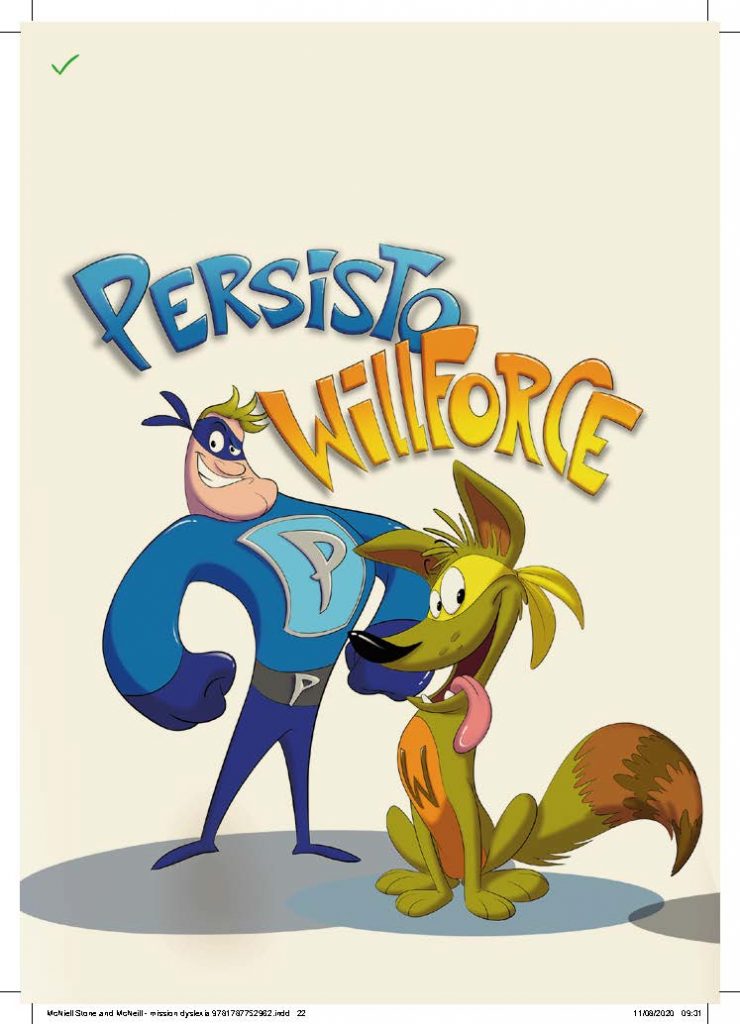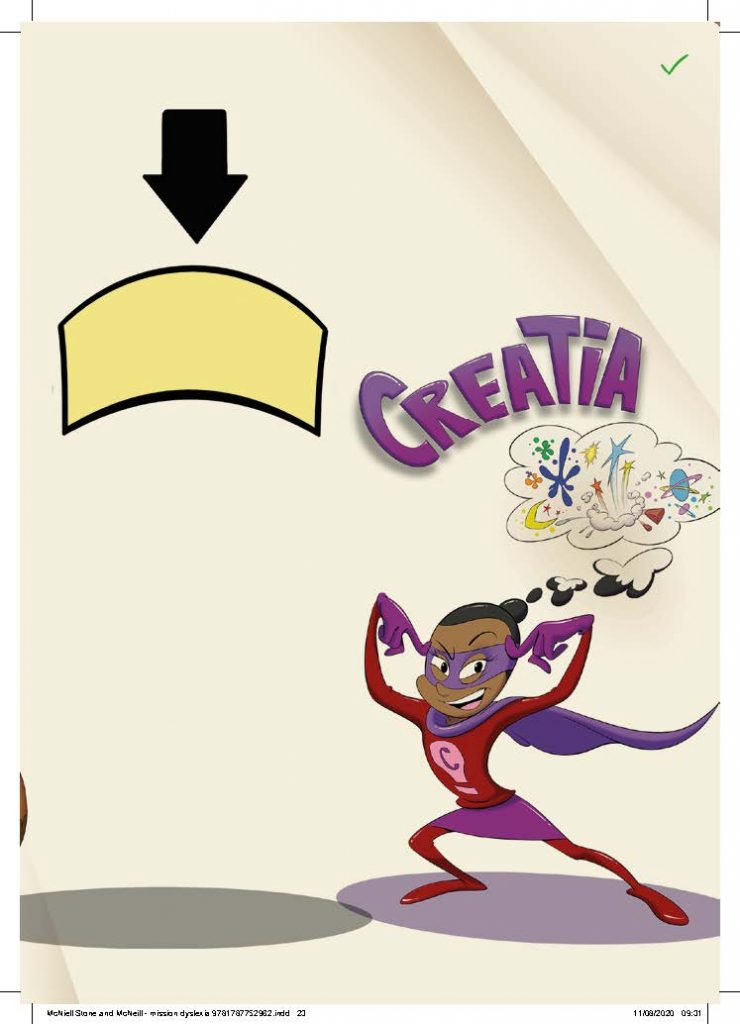Mission Dyslexia, out now, is a fun interactive book with three superhero characters representing dyslexic strengths (Creatia, Willforce and Persisto) for dyslexic kids aged 7-11.

Can you briefly outline your history working with kids and teens? How has this background influenced what you write about?
Julie, Paul and Rossie all volunteer their time to work with Dyslexia Scotland, delivering workshops, talks, focus groups with teachers, children and parents.
Rossie is the CEO of Dekko comics and runs workshops on animation and illustration and how to use your dyslexic strengths to succeed.
Paul is an experienced keynote speaker and delivered the Mission Superheroes workshops in schools across Scotland which focussed on raising awareness and building self esteem in children with dyslexia. He is also the head of Community Football for the Scottish Football Association.
Julie works in education with children with special educational needs and has a vast experience of working with children and teens, many of whom present with significant barriers to engagement including young people in the prison system, those experiencing homelessness or addiction.
All three are passionate about improving the educational experiences and outcomes for children and young people.
What was your initial inspiration for Mission Dyslexia?
Rossie and Paul, in partnership with Dyslexia Scotland and the Scottish Government, delivered a series of workshops across schools in Scotland to raise awareness of dyslexia and encourage young people to find their strengths and open up conversations with their teachers and parents about how to cope with challenges. At the same time Paul and Julie’s own child was undergoing assessment for dyslexia, and they were trying to reach for resources to support him and unlock strategies for them as a family.
The three came together and developed this resource for parents, carers or teachers to work through with children as a means of opening up conversations and looking at ways forward.
What can kids learn from Mission Dyslexia?

The main thing kids will learn is that they are awesome as they are! They have everything they need to get to where they want to be. They will learn to ask adults for help if they need it, to own the amazing and challenging parts of themselves, and how to move forward with their dyslexia and harness all the amazing gifts they already have. Also, they will learn that they are not alone and that everybody has things they struggle with, and excel at, in life. The message of the book is to be your brilliant self!
Many adults also struggle with dyslexia. Do you think adults will learn new things as well?

I think the book shines a light on dyslexia for adults and can create conversations about things young people find difficult to talk about. Although it touches on skills like reading, writing, and telling time, it also looks at how children may react in a classroom where they feel like they are failing. Rossie and Paul are dyslexic and talk openly about the challenges they have both faced as children but also as adults because of it. I think there are messages in there for parents and teachers to see the child, not the challenge. The last two chapters are dedicated to adults and has lots of useful information about how to put strategies in place for them, too.
How can Mission Dyslexia be used in a classroom or other school setting?
Mission Dyslexia is a resource which builds confidence in young dyslexic learners. It is strategy and solution-focussed, so it’s a great resource for digging into an issue a child may have with a particular thing (e.g. reading) and finding strategies together. It is also a great resource for building understanding and empathy in children who aren’t dyslexic, which is so important. The more we understand about dyslexia, the more we will guide our learning to make sure that all children are able to thrive.
Many of the pages of the book are available as free downloads so they are perfect for using in schools!
With a lot of students home and many parents experiencing the difficulties of home schooling for the first time, how can Mission Dyslexia help support both kids and parents?
Home school is a great space for children to explore what it feels like to be them. The heroes represent the brilliant strengths dyslexia may bring into a child’s life and feeling validated and valued for who they are is the most important message we can give them just now.
Parenting and teaching a dyslexic child can present challenges – particularly this year as we all try and juggle home, school, and family under one roof. This book gives everyone breathing space and allows families to find solutions that work for them.
In the past couple years, so much research has been done on neurodiversity and how kids learn differently. What are small steps teachers and educators can take to ensure all kids are getting the best out of their school day?
Our motto is “See the child.” Both Paul and Rossie experienced real challenges in the education system because teachers focussed too much on what a student couldn’t do. They are both happy and successful in their lives BECAUSE of their dyslexia and not IN SPITE of it. They managed to unlock their wonderful creativity and persistence and problem solving skills to create happy and healthy lives for themselves.
I know it’s tough in schools just now with ever increasing workloads and demands, but we cannot emphasise enough that a teacher who REALLY understands neurodiversity changes lives. Teachers change lives for the child and the class but they can also change the culture of the whole school.
Be the change you want to see. See the child and educate yourself on the best way to get the best out of them because what you are doing is life changing work.
With all the stress about COVID-19 at the moment, what are some ways we can help young people with dyslexia and other learning differences?
Young people may be scared and confused. It’s up to the adults around them to walk alongside them rather than constantly reminding them about what they have missed.
Too often we focus on the negatives, but some young people with learning differences have found real positives in the approach to learning this year. Are there any lessons we can learn from all the changes and adaptations this year has brought that we can take forward into the future? Can we embrace the use of technology? Are there ways we can be more dynamic or creative in our learning approach? Can we find the things that worked for children in our schools and use them to inform our practice going forward?
Let’s use this as an opportunity to make the real changes our children deserve.
Are there any other resources you would recommend?
Yes – please check out the addressing dyslexia toolkit which is a free resource for schools and parents